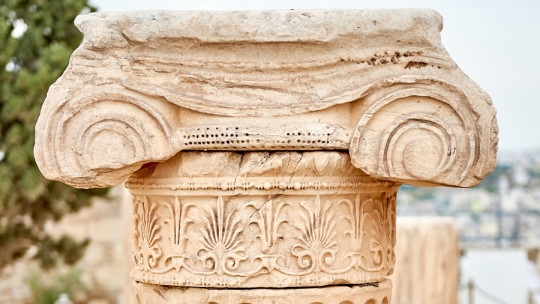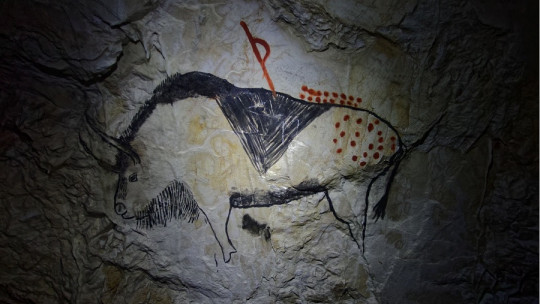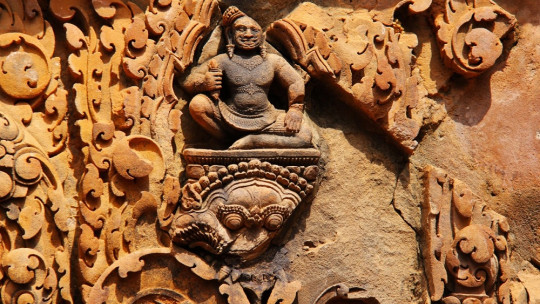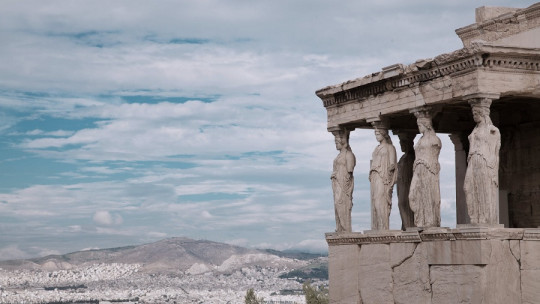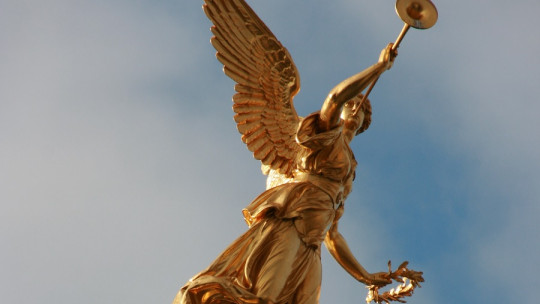We all have archaeological excavations in mind, as they are the basis of the plot of numerous novels, movies and even comics. The objects found in these excavations have always excited the popular imagination. From mummies in Egypt to medieval codices; everything is capable of originating a wonderful horror or science fiction story.
But, leaving fantasy aside, Do we know what archeology is exactly, and what it consists of? When did it originate? What do you base your studies on? In this article we briefly review what it is and what the characteristics of this discipline are.
What is archeology?
archeology is the science that studies past societies through the remains that have been preserved from them These remains can be architectural ruins, paintings, religious elements and other objects, as well as human remains. The nomenclature of this science is formed by the Greek words “archaios” (ancient, old) and “logos” (knowledge). In one word; Archeology tries to recover societies of the past in order to better understand both these ancient communities and our own present.
To this end, archeology borrows techniques and procedures from other sciences, such as history, geography or biology. It is important to know the historical evolution of a place to contextualize a finding, but knowledge of genetics or traumatology may also be relevant; For example, to determine whether the human remains found are those of a man or a woman, we will have to perform an analysis of the extracted DNA, and if we want to know the cause of death, we will have to be attentive to any bone fracture that could indicate an accident or murder.
It’s important pointing that, For a site to be considered archaeological, it must contain human remains, both biological and those of producers created by that society A site that contains only animal bones, for example, will not be considered archaeological, and will depend on other disciplines, such as paleontology.
Origins of archeology
The fever to discover the past increased exponentially during the 19th century. Thus were born excavations that sought to bring to light the remains of ancient civilizations, not always using the most orthodox methods. In the midst of the fever for collecting antiques, trafficking in heritage goods and archaeological looting proliferated
For example, Heinrich Schliemann, considered by some to be one of the first modern archaeologists, destroyed many archaeological strata during his excavations, a disaster that led to the irreparable loss of valuable historical information. Schliemann himself illegally removed several pieces that he had found from the territory of the then Ottoman Empire, a plunder that earned him a reprimand and the payment of a fine.

Unfortunately, the 19th century is full of people who, like him, dedicated themselves to illegally extracting goods. Egypt in particular was the victim of an authentic “archaeological massacre.” The famous case of the bust of Queen Nefertiti, taken out of the country by its discoverer, Ludwig Borchardt, has caused rivers of ink to flow. It seems that Borchardt did not correctly invent the bust of the queen, perhaps to make the Egyptian authorities believe that it was not so valuable. The fact is that the bust left Egypt more or less secretly, and is currently the subject of insistent claims by the Egyptian government.
Fortunately, today the panorama is very different. The archaeological discipline currently has a protocol in the process of excavation, extraction inventory and research, and heritage assets are subject to protection laws by different states and the international community.
The work of the archaeologist
When we think of archaeology, an excavation filled with workers and scientists comes to mind, extracting objects and constantly inventing them. However, that is only part of the work, the so-called “field work.” There are other areas to which archaeologists can dedicate themselves, including teaching and research. If we focus on field work, we find three main stages :
@image(id)
Archeology specializations
Archeology as a discipline has been subdivided in recent decades. As a result, we have several branches that depend on this main science and that, of course, share study methods and tools Let’s see the most important ones.
1. Ethnoarchaeology
He is in charge of studying the material remains of still existing pre-industrial cultures , for example, a tribe from today’s Africa, to try to better understand the societies of the past. At the same time, the archaeological techniques used by ethnoarchaeology also allow us to understand these current societies.
2. Cognitive archeology
It specializes in the study of the thoughts of our ancestors through their material remains ; that is, how behavior has developed in the genre Homo. It was Colin Renfrew who, at the University of Cambridge, announced the birth of this archaeological discipline, which focused its study on the “why” rather than the “what.” In other words, what had led our ancestors to produce some objects and not others.
3. Contextual archeology
This typology places special emphasis on context and uses contextual methods of analysis. It is based on the idea that communities of the past were related from various perspectives: socially, economically and spatially Contextual archeology is very aware, therefore, that each remains found is a manifestation of a specific and unique context.
4. Experimental archeology
Try to decipher, for example, how a monument was built or what the exact function of a found tool was. For this, experimental archeology artificially reconstructs the situation and analyzes the results obtained One of the best examples is the experiment being carried out in Overton Down, in England, where a hill has been built, imitating the one that kept the town of Çatal Huyuk, in Turkey, hidden. Objects made of different materials were buried in this artificial hill, in order to observe their conservation over the years.
5. Archeology of architecture
Also known as “architectural archaeology” or “mural”, it is the specialization that is responsible for the study of architectural materials. The term was coined in 1990 by the archaeologist Tiziano Mannoni (1928-2010). Through the construction remains, the aim is to know the society that produced them ; To do this, tools are used such as the stratigraphic method, which is responsible for analyzing the different strata of the archaeological site.
Through this discipline, we know the renovations that the various buildings have undergone and when they were modified.
6. Public archeology
It is the most recent of the disciplines derived from archeology, since it is currently still in the process of definition. Public archeology is, basically, the relationship established between society and archeology The term was first used by Charles McGimsey in 1972, in his book Public Archeology, and focused on the interaction of indigenous communities with society. However, the field of study of public archeology is much broader, as it also focuses on the illegal trade of heritage goods, historical memory and its influence on politics, the image that society has of archaeology, the participation directly from the public in the excavations, etc.
Some archaeological discoveries that have gone down in history
There are many finds that have achieved a place of honor in the history of archaeology. Let’s look at some of them.
1. The ruins of Pompeii and Herculaneum
They were discovered in 1738, which makes this site one of the first finds of archeology In fact, it was discovered when this discipline was not even conceived, so the excavations were carried out almost blindly and without any established scientific method. His fame spread around the world, and caused a real fever for the classic.
2. The Rosetta Stone and the beginning of Egyptology
Discovered during the Napoleonic campaigns in Egypt, It is thanks to this stele that we can understand the language spoken by the ancient inhabitants of the Nile Jean-François Champollion, a young 32-year-old historian, managed to decipher, after hard work, the Egyptian characters that appeared on the stone. The year was 1822 and the discovery established the foundations of Egyptology.
3. Heinrich Schliemann and the mythical Troy
There are still doubts today as to whether the strata of the city discovered in Turkey by the Prussian Heinrich Schliemann correspond to the Ilium sung by Homer His discoverer was convinced of this, although the almost obsessive passion he felt for ancient Greece may have influenced his conviction. In any case, the method used by Schliemann was unorthodox; During the excavation process, which they say included dynamite, important archaeological strata were irreversibly lost.
4. Howard Carter and the tomb of Tutankhamun
In November 1922 this British archaeologist discovered tomb KV62 in the Valley of the Kings, Egypt, and identified it with the lost tomb of Tutankhamun The find was exceptional, as it was the only Egyptian tomb that had not been raided and still preserved all its magnificent funerary trousseau, which included the famous mask of the boy-king. The discovery became even more famous when rumors of a supposed curse spread, based on the fact that many of the participants in the discovery died in a short period of time. Curiously, it took several decades for Howard Carter to die.
5. The Lascaux caves
In the 1940s, some beautiful samples of rock art were discovered in caves in the French Dordogne The discovery marked a milestone in the investigation of the culture of European Paleolithic communities and the understanding of their artistic manifestations.

